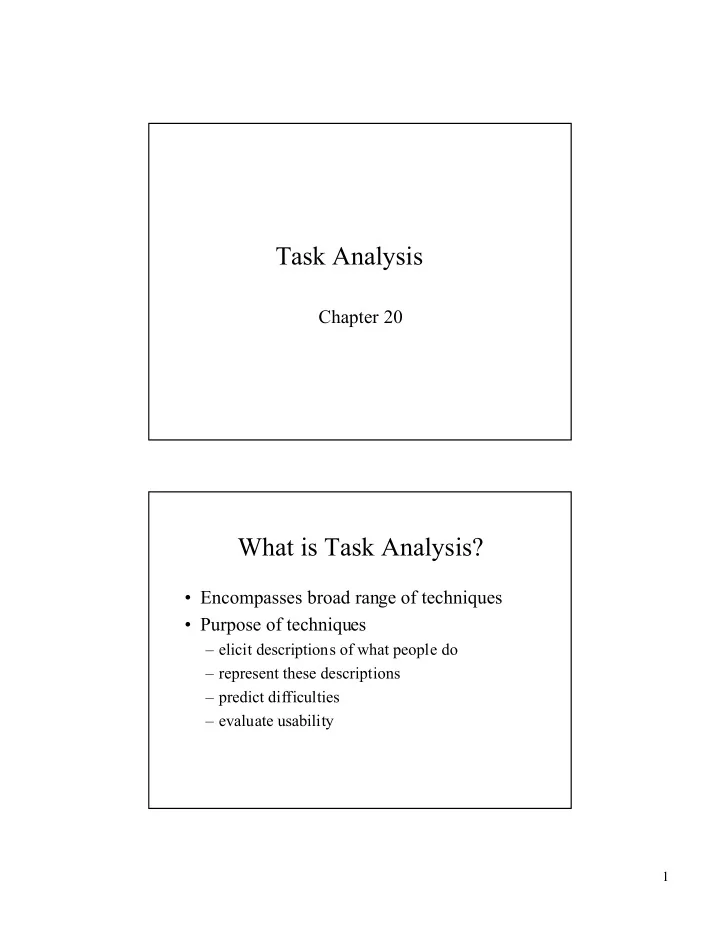

Task Analysis Chapter 20 What is Task Analysis? ¥ Encompasses broad range of techniques ¥ Purpose of techniques Ð elicit descriptions of what people do Ð represent these descriptions Ð predict difficulties Ð evaluate usability 1
Goals, Tasks and Actions ¥ Goal -- State of a system human wishes to achieve Ð Achieved through use of a device ¥ Task -- Activities required to achieve goal ¥ Action -- Subtask Ð decomposed to level involving no problem solving or control structure Types of Task Analysis ¥ Those that concentrate on steps required to complete task Ð Hierarchical task analysis ¥ Those that focus on user knowledge Ð Cognitive task analysis Ð Modeling Òhow-to-do-itÓ knowledge Ð Representing task knowledge 2
Hierarchical Task Analysis ¥ One of the most well known forms of task analysis ¥ Focuses on logic or practice of task Ð identifying tasks Ð categorizing tasks Ð breaking down into subtasks (decomposition) Ð check accuracy of decomposition ¥ Uses Data Flow diagram Hierarchical Task Analysis cont.. ¥ Three Stages Ð Starting Ð Progressing Ð Finalizing 3
Cognitive Task Analysis ¥ Informs the design process through application of cognitive theories ¥ Models mental rather than physical actions ¥ Models based on cognitive psychology ¥ Examples Ð Human Processor model Ð GOMS (goals, operations, methods and selection rules) Modeling Òhow-to-do-itÓ Knowledge ¥ Procedural Knowledge ¥ Use GOMS Ð description of methods needed to accomplish goals Ð methods made up of series of actions the user performs Ð When there is more than one method, use the selection rules 4
Representing Task Knowledge ¥ Ease of learning a new system depends on previous knowledge of similar systems ¥ Need to attend to previous knowledge that the user has of both specific and generic tasks ¥ Use KAT to identify knowledge relevant to task. KAT ¥ Knowledge Analysis of Tasks Ð understand the purpose of task analysis Ð identify user goals, subgoals, and subtasks Ð consider the order in which to be carried out Ð identify different task strategies Ð identify procedures Ð identify task objects and actions Ð identify representative, central and generic tasks 5
Recommend
More recommend